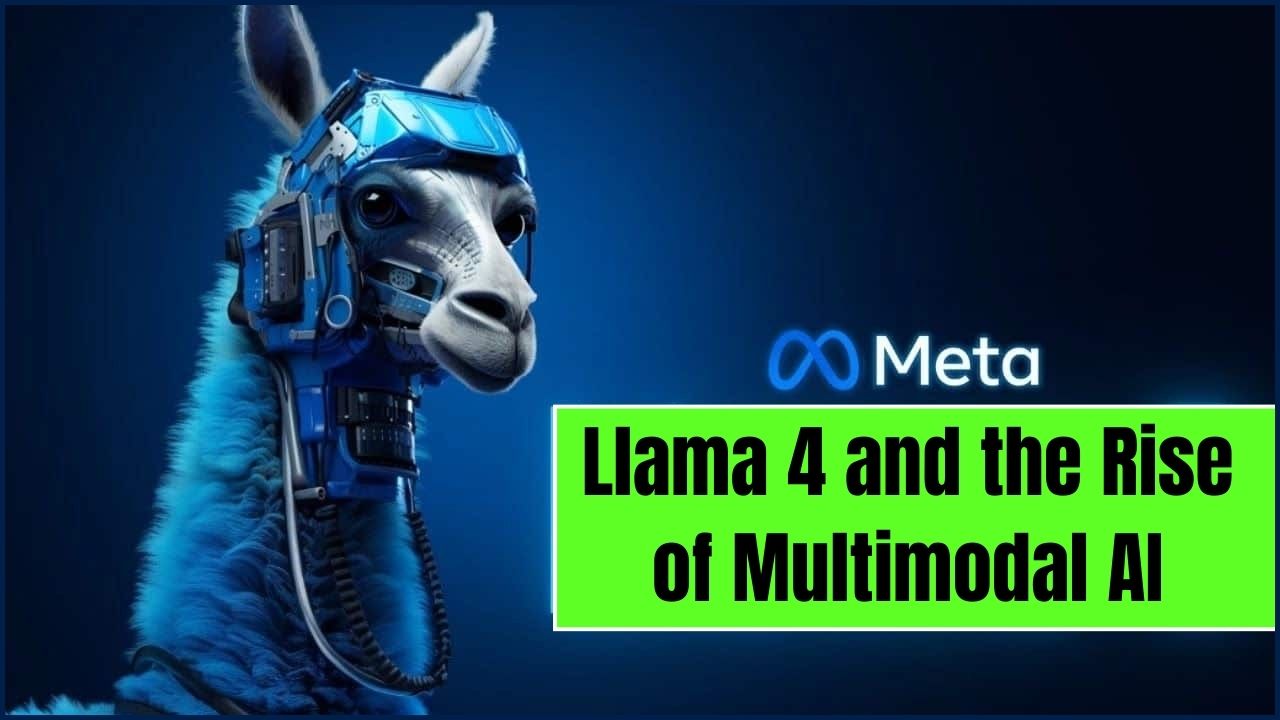
June 25, 2025
Building Multimodal AI Agents Using Meta's Llama 4 Models
Building Multimodal AI Agents Using Meta's Llama 4 Models
Can you imagine an AI that processes text, pictures, and audio? Imagine asking your AI a question and having it evaluate a picture, listen to an audio sample, and integrate these insights into a thorough answer. Meta's Llama 4 models make this type of AI viable and simpler to deploy than before.
Here's how to develop a multimodal AI agent using Meta's Llama 4 Scout and Maverick models. I will walk you through creating an intelligent AI that can evaluate and react to text, photos, and audio.
Understanding the Llama 4 Models
Let's learn about our models before coding. Meta's multimodal Llama 4 Scout can analyze text, photos, and sounds. An all-in-one assistant that understands numerous inputs. If you show it an image and ask it a question, it can respond with a visual and textual response. It is impressive!
Instead, Llama 4 Maverick emphasizes text and image interactions. It is ideal for captioning and answering questions based on text and images.
Combining these features to build a fully interactive multimodal agent that can handle many inputs is the magic. Let's start building!
Prerequisites and Setup
We will need certain tools to start. Our project requires Python (3.9 or above) and certain libraries. To manage images, install torch, transformers, requests, and Pillow. Install them all using this command:
pip install torch transformers requests Pillow After that, you will require Meta's API to use Llama 4 models. Have your API key handy before we begin. Visit Meta's platform to get one. We can code now that everything is ready!
Building the Multimodal AI Agent
Coding is fun! Add text, image, and audio to the Llama 4 Scout model.
Imagine creating an AI that can see a picture, listen to an audio clip, then describe and transcribe it. How can we do that?
from transformers import LlamaForMultimodal
from PIL import Image
import requests
# Load the model
model = LlamaForMultimodal.from_pretrained("meta/llama4-scout")
# Text input
text_input = "Describe this image and transcribe the audio."
# Image input
image = Image.open(requests.get("image_url", stream=True).raw)
# Audio input (WAV file)
audio_input = "path_to_audio.wav"
# Process inputs
outputs = model.generate(
text_input=text_input,
image_input=image,
audio_input=audio_input
)
# Display results
print(outputs)By providing text, image, and audio to the model, this code produces a thorough response that considers all three inputs. And the output will describe your given image and transcribe audio clip.
This is interesting since the Scout model smoothly combines different inputs to give you a single answer. Please make it more entertaining and engaging.
Text-Image Interaction with Maverick
Switch to Llama 4 Maverick for text and image processing. You can input a picture and ask the model, What's going on in this picture? See how to do it:
from transformers import LlamaForMultimodal
# Load the Maverick model
model = LlamaForMultimodal.from_pretrained("meta/llama4-maverick")
# Example text and image input
text_input = "What is happening in the picture?"
image_input = Image.open("path_to_image.jpg")
# Run the multimodal model
result = model.generate(text_input, image_input)
# Output reasoning from the image
print(result)The Maverick model receives the picture and a basic query from this section. Text input and picture content will determine output. It excels in image captioning and visual content queries.
Enhancing the Agent: Adding More Interactivity
Let's continue further. How about real-time user-agent interaction? Let consumers submit images or audio clips for the agent to examine. Tools like Streamlit simplify interactive web app creation.
import streamlit as st
st.title("Multimodal AI Agent")
image = st.file_uploader("Upload an image", type=["jpg", "jpeg", "png"])
if image:
# Process image and provide result
result = model.generate("Describe this image.", image)
st.write(result)The agent at Streamlit processes your given images in real time, creating captions or answering queries depending on what it “sees†in them. It is a fun method for non-technical people to engage with your AI.
Conclusion
You created a strong multimodal AI agent utilizing Meta's Llama 4 models. We constructed an interactive web interface using Streamlit and described how to mix text, image, and audio inputs to provide rich, context-aware replies.
But this is only the start. You may integrate video processing, add more complicated interaction layers, or scale the agent for real-world applications like content development or customer assistance using these models.
If you like this, experiment more. Try alternative inputs, customize the models for your use case, or combine these tools with other APIs to make your agent smarter.
After seeing how strong multimodal AI is, go make something wonderful with it!
773 views
